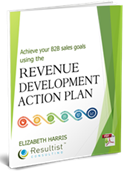
When the economy is strong and business is booming, it is easy to focus on present success and delay planning for future challenges. Newer business owners and entrepreneurs often prefer to delight in their own accomplishments rather than engage in long-term strategic planning. However, no boom lasts forever, which means that this naïve approach can be quite costly.
Contrary to popular belief, it does not take a severe recession to hinder business operations. Even small changes in the overall economy or an individual vertical can negatively affect revenue growth. Economists and experienced business owners understand that waiting to plan until an economic downturn has occurred can be a catastrophic mistake.
A Harvard Business Review article explains,
Inaction is the riskiest response to the uncertainties of an economic crisis. But rash or scattershot action can be nearly as damaging.”
A quick and logical response is key to maintaining the company’s position in the market. However, this response should be a customized comprehensive strategy, not a generic contingency plan. Buckley Barlow explains,
Having a recession strategy doesn’t mean having a simple backup plan for when revenues taper off. It means having an established, reliable framework that withstands any economic backdrop for extracting insights from consumers and macroeconomic trends along with your internal data.”
This framework involves taking the steps to predict the financial effects of a slump and reduce exposure to weather the downturn.
Predict Financial Effects
- Assess Vulnerabilities
Knowing where the business is vulnerable is a key component in understanding how to respond. Assess vulnerabilities across the organization and by business group to find areas where a downturn will alter operations.
- Predict the Severity
Analyze external data to predict the extent of the downturn. Model scenarios for a sound business response in the case of a modest downturn, severe recession, and depression. Theorize how these mild, moderate, and extreme economic changes will ripple through the supply chain to affect the organization.
- Calculate the Effects
Assign hypothetical values related to changes in sales volume, capital costs, commodity prices, transportation expenses, and so on. Tier numbers to correlate with the mild, moderate, and extreme economic downturns previously outlined. Calculate the effects that each scenario would have on the business using these figures.
- Examine the Balance Sheet
Generate financial reports using theoretical downturn numbers to analyze the cumulative effect on the balance sheet. Search for areas where organizational or business group modifications can absorb the impact of these revenue-restrictors.
- Analyze Competitors
Determine how competitors will be affected as well to get a broader picture of the market. Examine business-specific factors that could make competitors either more vulnerable or more resistant to a downturn. Consider business changes that would mimic their defenses and avoid their vulnerabilities to offer a situational competitive advantage.
Reduce Exposure
Debt
Liquidity is the most important way to reduce a company’s exposure during a downturn.
- Avoid incurring more debt than the business can pay back quickly.
- Do not wait too long to secure financing because as the downturn continues banks may be less likely to lend. Additionally, the terms of the loan may be less favorable as banks get more skittish.
- Reduce existing debt and liabilities to improve the organization’s risk profile for investors. A more attractive risk profile will make it easier to secure necessary financing to maintain daily operations if the downturn is prolonged or worsens.
Cash
Cash is the lifeblood of any organization.
- Practice disciplined cash management by postponing and reducing spending as well as focusing on cash inflows. Paying additional attention to both sides of the cashflow equation ensures sustainability.
- Manage customer credit risk by invoicing customers immediately, sending overdue invoices to collections, and refusing to sell products or services to bad customers.
- Sell unprofitable assets and old or obsolete equipment.
- Continue to invest in employee development but reduce extraneous perks to minimize labor-related expenses.
Performance
Align business objectives and operations to meet performance goals.
- Divest underperforming business operations and low-margin activities instead of holding onto them and diluting top performers.
- Streamline the organization and its operations by closing locations to centralize operations.
Inventory
To satisfy demand a business needs sufficient inventory, but excess inventory results in a high carrying cost. Cleaning up inventory management reduces waste and increases profitability.
- Purchase inventory shrewdly by leaning on historical metrics and forecast data to maximize liquidity.
- Improve inventory turnover metrics to avoid the costs associated with holding old inventory.
Weather the Downturn
Strategizing year-over-year rather than quarter-by-quarter is the best approach when weathering a downturn. Adapting business operations will always be smoother across a longer time horizon.
Offerings
In the presence of economic uncertainty focus on core competencies instead of expanding offerings. Unknown development, production, and sales costs involved with new products make them too risky to pursue during a downturn.
Preserve existing pricing to maintain brand value. Many businesses reduce prices in an attempt to gain additional market share when consumer spending falters. However, this approach typically devalues the brand by degrading perceived product worth and alienating existing customers. Instead of cutting prices to appeal to price-conscious buyers, look for ways to offer products with reduced functionality or services with limited scope that can be offered at a lower price point
Marketing
According to a Harvard Business Review article,
Companies that injudiciously slash marketing spending often find that they later must spend far more than they saved in order to recover from their prolonged absence from the media landscape.”
Maintaining brand awareness is critical to attracting new customers and remaining relevant with current customers.
Ecommerce
While a physical storefront requires numerous fixed costs, maintaining an ecommerce presence incurs far fewer expenses. Domain name registrations, web hosting, and other ecommerce-related fees pale in comparison to the rent, utilities, and staff for a retail store.
3PL
Lean on third-party logistics services to reduce supply chain costs. Utilizing multiple 3PL suppliers can provide a highly-customized suite of best-in-class technology for a complete solution that fulfills business needs across numerous locations and product lines.
Employees
Laying off employees negatively affects company morale, encouraging top talent to look elsewhere. The remaining employees often feel less connected to the company and their roles, which dampens their drive to pursue excellence. Instead of reducing headcount, invest in educating top employees and empowering them to lead the organization out of the recession.
Customers
Investing in the customer experience is a key strategy for withstanding any downturn. As budgets tighten, pulling funds from R&D to allocate to customer experience improvements allows a company to improve the stickiness of existing products instead of developing new ones.
Retaining customers is far more cost-effective than obtaining new ones, which makes increasing customer retention a top priority among savvy business owners during a downturn. Transforming returning customers into brand loyal customers and, ultimately, brand advocates requires a strategic approach. Product design, customer service, and sales incentives must align to bring the business through a downturn.
Investors
Create an investor communications strategy before it is needed to prepare for the possibility of a merger or acquisition. Having a documented approach in place will reduce uncertainty and provide an organizational roadmap as the economic climate shifts.
This may serve as a checklist and prompt you to assess “What if….?” The future appears to be rosy to some and worrisome to others.
 Regardless of whether you are hopeful or worried, at the core of your decision making, you will need a plan.
Regardless of whether you are hopeful or worried, at the core of your decision making, you will need a plan.
The Revenue Development Action Plan will help you increase your B2B sales, know when you are on the right track, and how to turn your clients into advocates.
